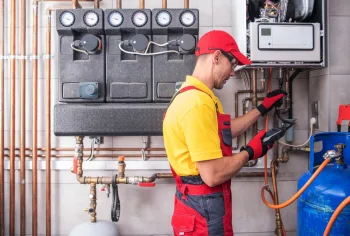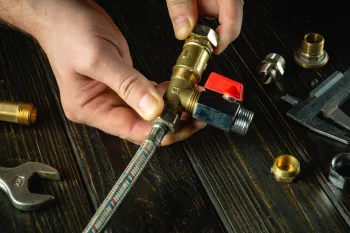
Coastal Commercial Services, Inc. is a trusted provider dedicated to delivering quality service and expert solutions across a range of industries. With a strong commitment to safety, efficiency, and customer satisfaction, our company specializes in the repair and maintenance of commercial kitchen equipment, ensuring that businesses can operate smoothly and reliably. Among the many types of equipment serviced, gas stoves play a critical role in commercial kitchen operations.
Understanding how gas stoves function and the importance of their proper maintenance can help restaurant owners and kitchen managers optimize performance, reduce downtime, and maintain a safe working environment.
Learn More About Modern Gas Stoves
A burner gas stove is a fundamental appliance in both residential and commercial kitchens, prized for its precise heat control and quick cooking capabilities. Most gas stoves operate by burning natural gas or propane, which produces an open flame directly beneath cookware.
Unlike electric stoves, this direct heat allows chefs to adjust cooking temperatures instantly, often by turning control knobs manually, giving them greater control over the cooking process compared to electric alternatives. Most gas stoves feature multiple stove burners, allowing simultaneous cooking of various dishes, which is essential for efficient kitchen operations.
Understanding how most gas stoves function is crucial for maintaining safety and optimizing performance in any kitchen environment. From ignition to flame regulation, each stove burner plays a vital role in ensuring consistent heat distribution.
Proper maintenance and knowledge of how a gas stove operates help prevent issues such as uneven heating or gas leaks, which can pose safety risks. Whether in a bustling restaurant or a home kitchen, the reliability and responsiveness of most gas stoves make them an indispensable tool for cooks worldwide.
How Does a Gas Stove Work: The Basic Mechanisms
The basic mechanism of a gas stove involves three key stages: fuel intake, ignition, and flame production. First, when a burner knob is turned manually, it opens a valve that allows the flow of fuel, usually natural gas or propane, to enter the burner assembly. This controlled flow of gas mixes with air to create a combustible mixture.
Next, the ignition process begins, either through a built-in electric igniter that produces a spark or, in older models, a standing pilot light that provides a continuous flame. The ignition system gives off a spark that ignites the gas-air mixture at the stove burner, producing a flame. This flame can then be adjusted by controlling the gas flow, allowing precise temperature control for cooking.
The entire process ensures efficient and safe combustion, providing the heat necessary for cooking.
Components of a Gas Stove
Understanding the key components of both a gas oven and a gas cooktop is essential for ensuring safe operation and optimal performance in any kitchen setting. Here’s a closer look at the critical parts that make these appliances function effectively.
Burners: Cooktop burners are the primary components where the gas-air mixture is ignited to produce flame. They consist of a series of small holes or ports that evenly distribute the gas, allowing for controlled and consistent heat output. Different burner sizes accommodate various cooking needs, from simmering to high-heat searing.
Ignition System: The ignition system is responsible for lighting the gas as it flows through the burner. Most gas stoves use an electric spark igniter that creates a small spark to ignite the gas, while older models may rely on a standing pilot light. This system ensures safe and reliable ignition every time the stove is turned on.
Gas Supply and Valves: The gas supply delivers fuel from the main source, such as a propane tank or natural gas line, to the stove. Valves control the flow of gas to each burner, allowing users to adjust the flame size manually. Proper functioning of these valves is essential for regulating heat and maintaining safety in the kitchen.

Operating Your Gas Stove Safely
Safety mechanisms like flame failure devices and thermocouples are crucial components in modern gas stoves, designed to prevent dangerous situations such as leaking gas and indoor air pollution.
A flame failure device works by monitoring the presence of a flame at the gas burner; if the flame goes out unexpectedly, the device automatically shuts off the gas valve to stop the flow of gas. This prevents the buildup of unburned gas, which could lead to explosions or harmful indoor air quality issues. Thermocouples complement this system by generating a small electric current when heated by the burning gas, signaling that the flame is active and keeping the gas valve open. In stoves with electric ignition systems, these safety features are especially important to ensure that gas only flows when a flame is present.
Proper ventilation is also essential to maintain indoor air quality and prevent the accumulation of combustion byproducts. Together, flame failure devices, thermocouples, and adequate ventilation create a safer cooking environment by reducing the risks associated with burning gas, such as carbon monoxide buildup and other indoor air pollutants.
Maintenance Tips
To ensure the efficient operation and safety of your gas stove, regular maintenance is essential. Even though most modern gas stoves have advanced safety features, it’s important to periodically check the gas supply line for leaks or damage. If you ever smell gas, immediately turn off the stove manually and ventilate the area by opening windows and turning on the range hood to disperse any harmful fumes. Never ignore the odor, as it could indicate a dangerous leak.
Cleaning the stove burners regularly prevents clogging and ensures even flame distribution, which improves cooking performance and reduces the risk of incomplete combustion. Additionally, inspecting and cleaning the range hood helps maintain proper ventilation, reducing indoor air pollution.
Performing these simple maintenance tasks can prolong the life of your gas stove and keep your kitchen safe and efficient.
For commercial kitchens that rely on the instant heat and even heat distribution provided by gas stoves, proper maintenance and expert service are essential. Contact Coastal Commercial Services, Inc. to ensure your kitchen equipment operates safely and efficiently, so you can focus on delivering exceptional results. Our experienced team is ready to support your commercial kitchen needs with reliable repairs and maintenance.



